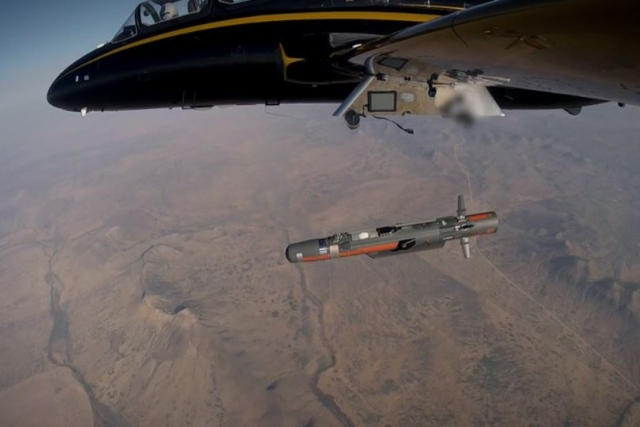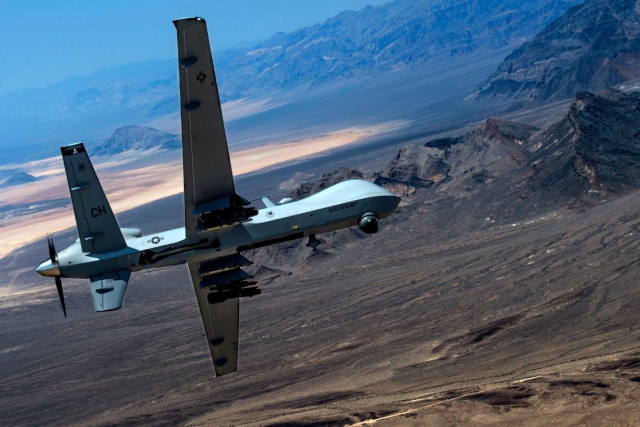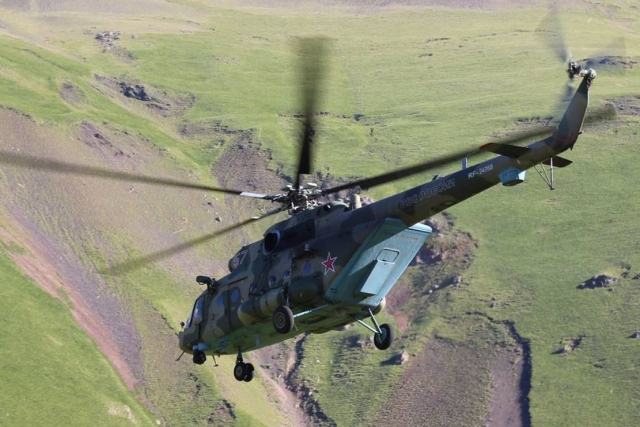Russian Su-57 Preparing to Compete with F-35 for Stealth Jet Market Share
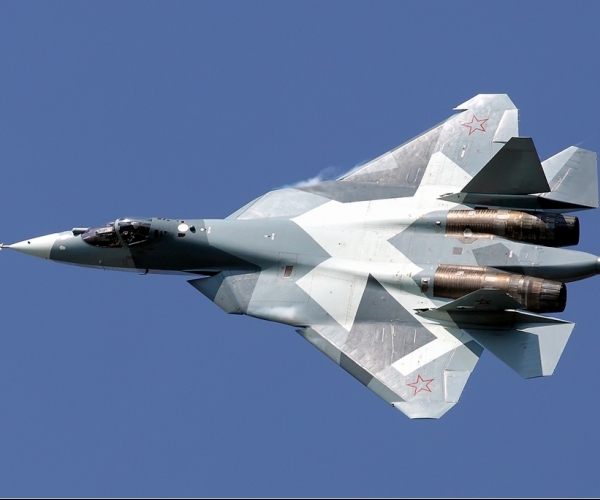
Russian Sukhoi Su-57 fighter
While the US F-35 stealth aircraft has become one the fastest selling fighter jets in the world aircraft market, thanks to zero competition; that could be about to change with the Russian Su-57 fifth-geneation aircraft preparing to be offered for international sales.
An export version of the jet, the Su-57E could be offered to prospective customers in the Middle East and Asia with the Dubai Air show in November this year becoming the likely international launch pad for the F-35 challenger.
The Russian United Aircraft Corporation (UAC) which is flight-testing the plane is ready to commence supplies to the Russian Aerospace Forces (RAF) from 2020 onwards. In fact, the RAF is expected to order 76 of the new aircraft up from an earlier 16 due to a recent 20% reduction in the price of aircraft and its components. Russian media outlets reported on May 16 that Russian President Vladimir Putin had announced that 76 Su-57 fifth-generation fighter jets will be purchased for the RAF before 2028 and that a package contract will be inked in the near future.
The Su-57 which had earlier been christened as the T-50 got its new name in 2017 which is said to have been derived from adding up 35 and 22 suggesting that its features are combination of the two US fifth generation planes (F-35 and F-22).
Russia’s Sukhoi Su-57 incorporates the functions of the US F-22 and F-35 fighter planes but outperforms them, Chief designer and Director of the Sukhoi Design Bureau, Mikhail Strelets was quoted as saying on Zvezda TV in November 2018. "It so turned out and we didn’t choose this specially but if you sum up 22 and 35, you get the figure 57," the Sukhoi chief designer said.
The Russian fighter jet is capable of accomplishing missions to destroy both air and ground targets as compared to the two US aircraft that are focused on either of the specific tasks, the Sukhoi chief designer said. "The F-22 was initially developed as an aircraft to gain air superiority. But eventually the Americans realized that it was essentially wrong to design the aircraft only for carrying air-to-air missiles and made an attempt to fit air-to-surface weapons into the existing configuration of its compartments. But the configuration of the compartments did not allow placing larger cargoes (weapons)," Strelets said.
The designers of the Su-57, earlier designated PAK FA- (Prospective Airborne Complex of Frontline Aviation) faced the task of developing a multi-functional aircraft, he said adding that the Russian aircraft has a higher power to weight ratio than the American planes.
Official information on the Su-57 is rather sketchy. Its key features have not been made public by its manufacturers. For an aircraft intended to be launched in the international market, the Su-57 does not even have an official website unlike the F-35 and F-22 both of which are high on the PR offensive.
However, indications that the SU-37 project is indeed advancing to a level of serial manufacturing to feed the RAS and a potential export market was made known by Alexey Krivoruchko, Russia's deputy defense minister who visited the Su-57’s manufacturing unit, the Komsomolsk-on-Amur Aircraft plant in the last week of May. He said that mass production of the jets will begin soon and that the Russian armed forces will get their first Su-57 fighter by the end of 2019.
The minister also revealed that Russia is developing an advanced anti-ship missile that will be used in the ammunition load of Su-57 "Today the enterprise is working on developing an active homing warhead for the promising anti-ship missile that is planned to be carried by the Su-57 fighter as well," Krivoruchko said. A working meeting was held on the premises of the Detal Design Bureau to discuss the issue of signing a contract with Tactical Missiles Corporation on acquiring the entire range of air-launched weapons for the Su-57 fighter jets, the deputy defense minister said, according to TASS.
Information from Russian sources indicates that an advanced air-to-air missile is said to be on part of the Su-57 weapons suite, the R-77 (designated as izdeliye 180 or K-77M). The medium-range, active radar homing air-to-air missile is being developed by JSC Tactical Missiles Corporation. The fighter is also said to be equipped with air-launched anti-ship variant of Kalibr cruise missiles.
A potential weak link in the Su-57 sales prospects is said to be the absence of an aircraft carrier version like the F-35B which was developed for short-take-off, vertical landing. Unless such a version is on the cards, it rules out sales to navies of countries such as China and India which are in the process of expanding their blue-water naval capability by acquiring aircraft carriers.
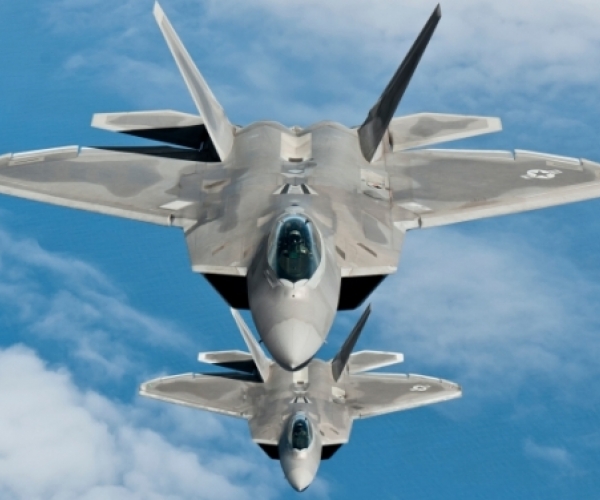
Su-57 Versus F-35 and F-22
|
|
Su-57S |
F-35 |
F-22 |
|
Stealth |
Yes; Radar cross section (RCS) Radio-photonic radar, theoretical max detection of 500km Glass coating to cut down RCS by 30% |
Yes; radar cross section 0.005 sq m
|
Yes ; Radar cross section of 0.00016 sq metres |
|
Weapons |
Guns: 1 × 30 mm Gryazev-Shipunov GSh-30-1 autocannon in right LEVCON root Missiles: Air-to-air missiles: RVV-MD (4) R-73 (2) R-37M Air-to-surface missiles: Kh-38ME (4) Anti-ship missiles: Kh-35E, 31 (2) Anti-radiation missiles: Kh-58UshKE (2) 250, 500, 1500 kg guided bombs X-59MK2 X-58UHK Anti-tank "Drill" 500 kg cluster-bomb + active homing |
25 mm GAU-22/A cannon AIM-120C/D air-to-air missiles 2,000-pound GBU-31 JDAM guided bombs 1000-pound GBU-32 JDAM Guided bombs |
M61A2 20-millimeter cannon with 480 rounds AIM-120A/C AMRAAM missiles GBU-32 JDAM Lockheed Martin/Raytheon AIM-9M/X sidewinder air to air missiles Boeing Small diameter bomb |
|
Radar |
Sh121 multifunctional integrated radio electronic system (MIRES) Byelka radar (400 km, 60 targets of 16 hit) N036-1-01: Frontal X-band active electronically scanned array (AESA) radar N036B-1-01: Cheek X-band AESA radars for increased angular coverage N036L-1-01: Slat L-band arrays for IFF |
AN/ APG-81 (AESA) radar |
AN/ARG 77 (AESA) radar |
|
Speed |
At altitude: Mach 2 Supercruise: Mach 1.6 |
Mach 1.6 |
Mach 2 |
|
Max take off weight |
|
22,680 kg |
38000 kg |
|
Unit cost |
T-50 (Sukhoi’s internal name for aircraft): US$50 million |
$85 million |
$150 million |
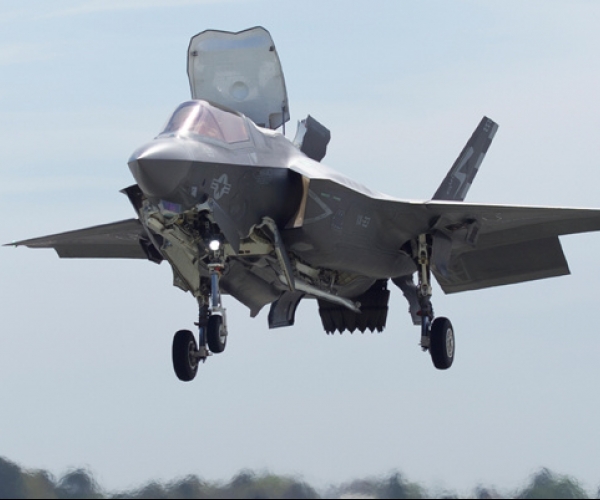
Russian Su-57 Stealth Fighter’s Engine Enters Serial Production
Russia appears to have accelerated work on the Su-57 stealth fighter jet by putting its AL-41F-1 turbofan, the ‘first stage’ engine of the fifth generation fighter jet into serial production.
Launching the serial production of AL-41F-1 engine means that the way for the long-awaited serial production of Su-57 jet is open and that making presentations in potential export markets besides supply to the Russian air force is a near-term possibility, industry sources told defenseworld.net.
The first stage engine provides Su-57 with such features as super-maneuverability, high power-weight ratio, low visibility. Also it features the plasma oxygen-less ignition system for both main and afterburner combustors.
A more advanced ‘second stage’ engine known as Izdelie 30 will give Su-57 an ability to fly in super-cruise mode. Super-cruise means an ability to cruise at supersonic speed without after-burners which translates into significant benefits such as fuel economy and stealth capability.
The Izdelie 30 will be the first engine to be manufactured in with full digital control, Russian media reported. The advanced controls together with super-cruise ability promise to make it a match for the latest in western engine technology such as the PW F-135 which powers the F-35 stealth jet of Lockheed Martin.
An earlier TASS said that altogether 38 AL-41F-1 engines were manufactured during the development program, among them 30 for the flight trials.
The first flight of Su-57 with the second stage engine took place in December 2017. According to UEC information, the latest technologies and materials used in the construction of the power plant making it possible to reach the parameters of the 5th generation engine.
Earlier, in March 2019, Viktor Kladov, Rostec’s head for international cooperation, has disclosed that Russia was going to introduce to the international arms market the Su-57E, an export version of Su-57 and that that Dubai airshow in November 2019 could be the possible international premiere of Su-57E.
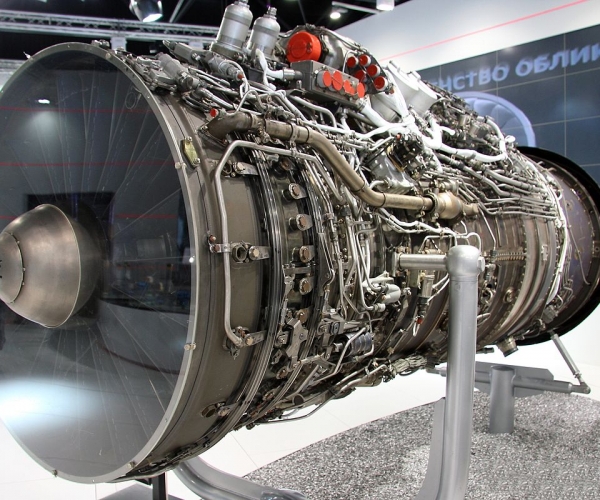
Fifth generation stealth fighters’ engine comparison
|
Engines |
Su-57- AL-41F-1 |
Su-57 Izdelie 30 |
F-35 |
F-22 |
|
Make |
Russian |
Russian |
American |
American |
|
Engine performance |
Saturn Lyulka AL-41F1 afterburning turbofans, which are rated at 32,500lbs thrust each |
second stage Saturn izdeliye 30 engines, which are expected to deliver roughly 28,000lbs of dry thrust and 42,000lbs of afterburning thrust |
F135-PW-100 engine with selective models being equipped with Vertical takeoff equipment. The engine produces 40,000 lbs of thrust. |
Two F119-PW-100 turbofan engines with two-dimensional thrust vectoring nozzles. Each engine produces 35,000 lbs of thrust |
Potential markets for the Sukhoi Su-57 fighter include the Gulf countries including the UAE and Saudi Arabia who have been denied the F-35. The only nation in the middle-east to have purchased the Lockheed Martin fighter is Israel. It has procured 50 F-35s at average price of $100-110 million per aircraft.
“According to a top Israeli defence official, Tel Aviv seeks to remain the only country in the region with F-35 jets to maintain its military’s qualitative edge.” Sputnik reported during May last year. This leaves the field open for the Su-57 to sell to countries which may be US allies in the region but may denied the F-35 due to political reason and this is the market in the Cross-hairs of Russia.
This might also explain why Russia flew two Su-57s in a combat mission over Syria. The reason given then by military sources to Russia media was that it was to test its electronic system. However images of the stealth jet’s landing at the Hmeimim Air Base late last year, released by the Russian MoD indicate a plan to make the jet’s abilities known to a global audience.
